Teaching with Contemporary Art
Teaching with Contemporary Art
What It Takes
Teaching with Contemporary Art
What It Takes
What does it take to become an artist? K-12 students respond.
Teaching with Contemporary Art
An Expanding Network
Teaching with Contemporary Art
An Expanding Network
Perhaps one of the most exciting things about our network of Art21 Educators so far has to do with those teachers who are building momentum and reaching out to other cohorts in order to collaborate. Over time, I can see this network of teachers not only influencing each others practice but also contributing to new national arts standards, helping others to understand the importance of contemporary art in the curriculum, and continuing to facilitate workshops at national and statewide conferences in order to spread the love.
Teaching with Contemporary Art
You Say You Want Evolution: Looking Backward and Forward with Portfolios
Teaching with Contemporary Art
You Say You Want Evolution: Looking Backward and Forward with Portfolios
Similar to in-progress critiques, portfolio reflections and evaluations do not have to arrive at the end of things. Utilized during the course, it allows for both looking back and looking forward.
Teaching with Contemporary Art
The Changing Shape of Teamwork
Teaching with Contemporary Art
The Changing Shape of Teamwork
Back in October, 2009 I wrote a post called Teamwork which focused on the fact that, as educators, we often have to work creatively with others in order to construct meaningful, age-appropriate and fun lessons. The best lessons and units of study are often the product of people working together, including educators, community members, parents, and of course students. When I look back just four years ago I realize that my experience with collaboration has changed and evolved into other forms.
Teaching with Contemporary Art
Well Beyond Everyday
Teaching with Contemporary Art
Well Beyond Everyday
If you are interested in how everyday materials can become bizarre and (sometimes) brilliant sculpture, there are three shows ready and waiting for you in Chelsea: Nayland Blake’s What Wont Wrong at Matthew Marks; B. Wurtz’s Recent Works at Metro Pictures; and Mark Dion’s two-floor delight titled Drawings, Prints, Multiples and Sculptures at Tanya Bonakdar.
Teaching with Contemporary Art
Art21 New York Close Up
Teaching with New York Close Up | Liz Magic Laser and David Brooks
Teaching with Contemporary Art
Art21 New York Close Up
Teaching with New York Close Up | Liz Magic Laser and David Brooks
Two recent New York Close Up films featuring artists Liz Magic Laser and David Brooks exemplify how the film series “can make strong interdisciplinary connections.”
Teaching with Contemporary Art
Teaching with El Anatsui
Teaching with Contemporary Art
Teaching with El Anatsui
El Anastui, one of my favorite artists from season 6, is in some ways an educator’s dream. His sculptures and installations reference history, culture and memory while simultaneously exploring the possibilities of found materials and different processes for making art. And while Anatsui is best known for his stunning, draped metal sculptures, there is more to the work with than meets the eye… and that’s quite a bit to begin with.
Teaching with Contemporary Art
Art21 Educators: Success Stories
Teaching with Contemporary Art
Art21 Educators: Success Stories
Over the past four years there have been many success stories from a what-still-feels-like-new Art21 Educators program. And while the experiences within and beyond Art21 Educators vary wildly from teacher to teacher, some of the educators we have worked with- in a range of disciplines and not just art- have provided us with specific comments and reflective narratives that often make smiles touch the back of our heads.
Teaching with Contemporary Art
Messing with the Stuff
Teaching with Contemporary Art
Messing with the Stuff
In order for students to feel comfortable expressing themselves with a particular medium, they often have to spend plenty of time messing with the stuff they are interested in shaping- be it car parts, plastics, plaster or paint- before they may be ready to create high quality works. A few artists I find myself recommending to students when it comes to specifically “messing” with paint and thinking like an abstract painter include Hans Hoffman, Helen Frankenthaler, Howard Hodgkin and Jessica Stockholder.
Teaching with Contemporary Art
Join Us for Year Five of Art21 Educators
Teaching with Contemporary Art
Join Us for Year Five of Art21 Educators
Are you a teacher interested in learning more about utilizing contemporary art in your classroom? Does spending a week in New York City this summer collaborating with other educators and …
Teaching with Contemporary Art
Creative Killing?
Teaching with Contemporary Art
Creative Killing?
While the NRA is quick to blame video games for violent behavior because they would much rather talk about something else besides banning assault weapons and ammunition (thank you, Governor Cuomo), I think that organizations like the International Game Developers Association could have a dramatic impact on the future of video games worldwide if the “creative” end of gaming wasn’t so consistently connected to killing people on a video screen.
Teaching with Contemporary Art
When Works of Literature Make The Leap
Teaching with Contemporary Art
When Works of Literature Make The Leap
Contemporary artists and performers offer pathways into literature for the hard-to-inspire. Artists such as Glenn Ligon, Jenny Holzer, and even performances like the off-Broadway production of My Name is Asher Lev offer students ways to get inspired and involved with literature from different starting points.
Teaching with Contemporary Art
Teachable Moments in 2012
Teaching with Contemporary Art
Teachable Moments in 2012
Before we continue talking about last week’s “Speak About What’s Unspeakable,” I thought it might be good idea to end the year on a constructive note by looking back at some of the most teachable moments- events, exhibits, chance happenings and other opportunities – that made for uncanny entry points in the classroom…
Teaching with Contemporary Art
Speak About What’s Unspeakable
Teaching with Contemporary Art
Speak About What’s Unspeakable
In the contemporary art classroom, perhaps there is an opening to deconstruct what’s really behind our love of guns, the obsession with “killing”, and “hunting down” characters in things like video games? Can we make spaces where these things are discussed and responses are shared in order to educate a broader audience that really affects change?
Teaching with Contemporary Art
Teaching with Lynda Benglis in the Elementary Classroom
Teaching with Contemporary Art
Teaching with Lynda Benglis in the Elementary Classroom
Sharing contemporary art is a wonderful way to generate questions and discussions about art, and in turn, motivate young artists to take risks with their own art making.
Teaching with Contemporary Art
Guest Bloggers This Week: Teaching with Contemporary Art
Teaching with Contemporary Art
Guest Bloggers This Week: Teaching with Contemporary Art
This week I am pleased to say that the Teaching with Contemporary Art column some guest bloggers…
Julia CopperSmith and Maureen Hergott are both alumni of the Art21 Educators program and teach elementary art education at Scott and Westdale Elementary Schools in Melrose Park and Northlake near Chicago. Their work has been inspiring to all of us here at Art21 for the past two years, especially since they are finding ways to work with contemporary art and engage some very young students in the process.
Teaching with Contemporary Art
Combining (Complicating?) Ideas
Teaching with Contemporary Art
Combining (Complicating?) Ideas
Years ago I had a professor who was a bit cruel when it came to giving feedback. But one piece of feedback he gave me has influenced my teaching, especially in units like this one. He once said, exasperated over my inability to get to the next step on a piece, “Joe, you call these ideas?? Put them together and make one good one!”
In the spirit of this advice which has resonated with me for years I have asked my own students to begin combining ideas in order to more fully explore and depict the theme and subject they have chosen.
Teaching with Contemporary Art
Spotlight Conversations
Teaching with Contemporary Art
Spotlight Conversations
During Art21’s yearlong professional development initiative, Art21 Educators, we ask that teachers coordinate a one-on-one or group conversation that allows them to reflect on and explore major successes and challenges …
Teaching with Contemporary Art
Now See This: Teaching with Hans-Peter Feldmann and John Baldessari
Teaching with Contemporary Art
Now See This: Teaching with Hans-Peter Feldmann and John Baldessari
I have always been interested in the way certain artists, more so than others, have the ability to take us by the hand (or the eye) and walk us through works of art very deliberately. Because the “subject” is often about the whole work and not a single focal point, these artists persuade us to compare and contrast, and see the small differences as well as the commonalities.
Teaching with Contemporary Art
Feedback Control
Teaching with Contemporary Art
Feedback Control
Giving good quality feedback can sometimes make the difference between students completing mediocre assignments and high quality works of art. This week I want to offer some suggestions for what to do when students are “done” but we know they aren’t.

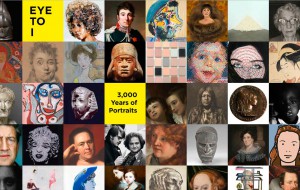
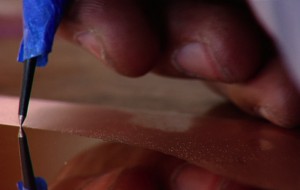
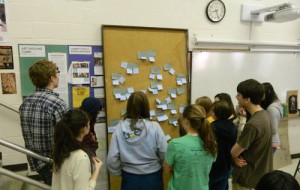

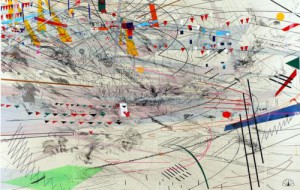
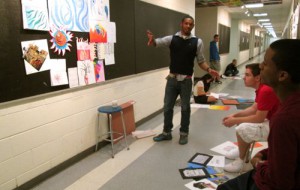
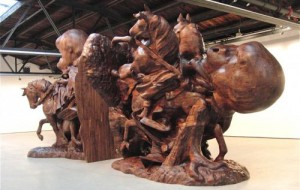

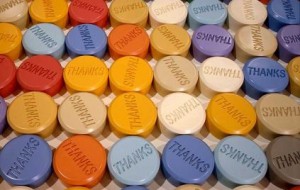
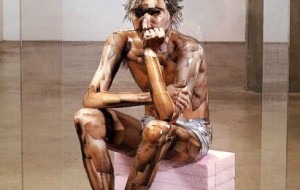
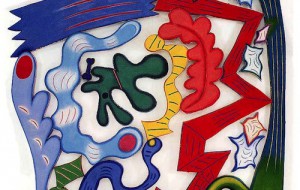




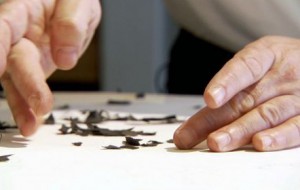

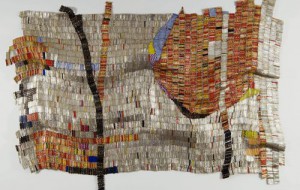


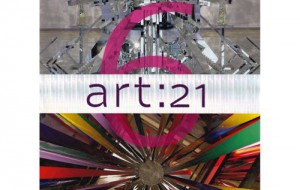



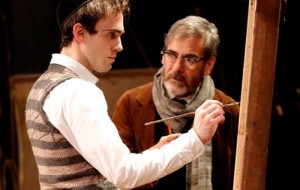



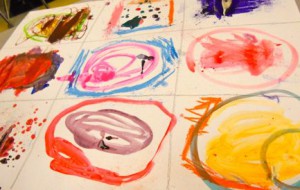







 Older
Older